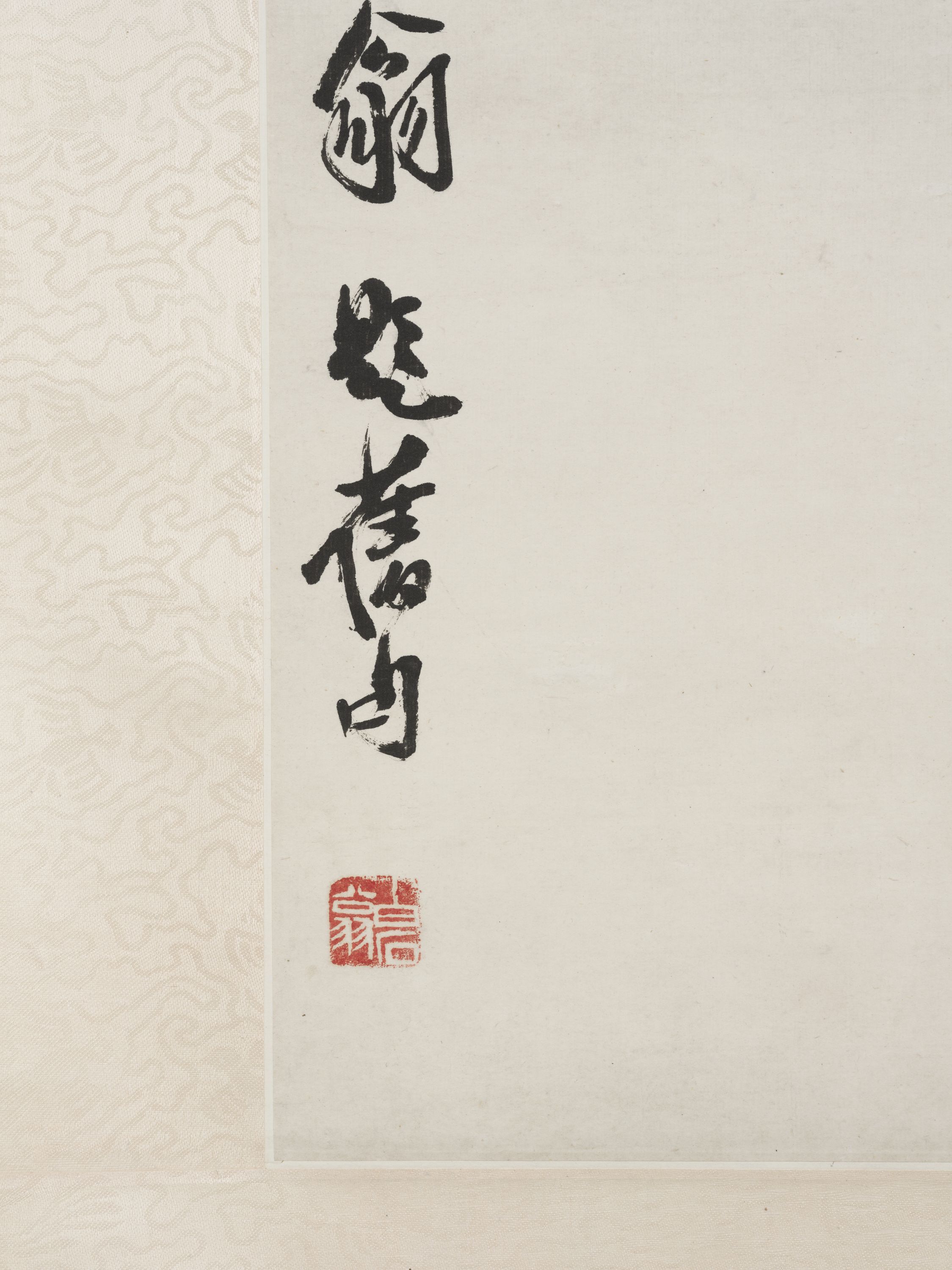
La Pie
Papier, Encre, Couleurs - Pigments
Peinture
白石翁
Don manuel : Société des Amis du musée Cernuschi
M.C. 2002-2
Bird-and-flower painting occupy a special place in the work of Qi Baishi. It was a genre he explored continuously throughout his painting career of almost 70 years, and which illustrates the developments in his style. At the turn of the 20th century, his meticulous execution of birds and insects, inherited from his training and the teaching of Hu Zizhuo (Hu Qinyuan), gave way to experimentions inspired by Bada Shanren (1626-1705). In the 1920s, bird-and-flower painting forged a personal style that is today considered the most representative of the artist.
The magpie belongs to this period which began in the late 1920s and lasted until the 1930s. The bird is an auspicious subject here, because of the homophony in the characters xi (for magpie) and xi (for happiness). As the poem accompanying the painting suggests, the bird is depicted at the moment just before it takes flight.
Comparison of the Cernuschi Museum painting and a painting with a similar subject and composition dating from the latter years of the 19th century reveals the originality of the artist’s work in his old age. The use of calligraphy down the full length of the composition creates a sense of scale that enhances the stylistic connections between script and painting. The dry strokes tracing the intertwined branches echo the energy-charged strokes of the characters. Furthermore, while the composition is based on contrasting colours – the bird’s black and white plumage and the red and black leaves – this contrast creates a sense of harmony by blending red into the grey of the branches and grey into the red of the leaves.
Eric Lefebvre, Six siècles de peintures chinoises, œuvres restaurées du musée Cernuschi, Paris Musées 2009, p. 132-133
Eric Lefebvre, Art chinois à Paris, Paris-Musées, 2011, p. 26,50, 52, 118
Xu Gai, Qi Baishi, Hebei jiaoyu chubanshe, 2000 (Zhongguo minghuajia quanji) p. 28
Gilles Béguin, Activités du musée Cernuschi, Arts asiatiques, 2003, t.58, p. 124


